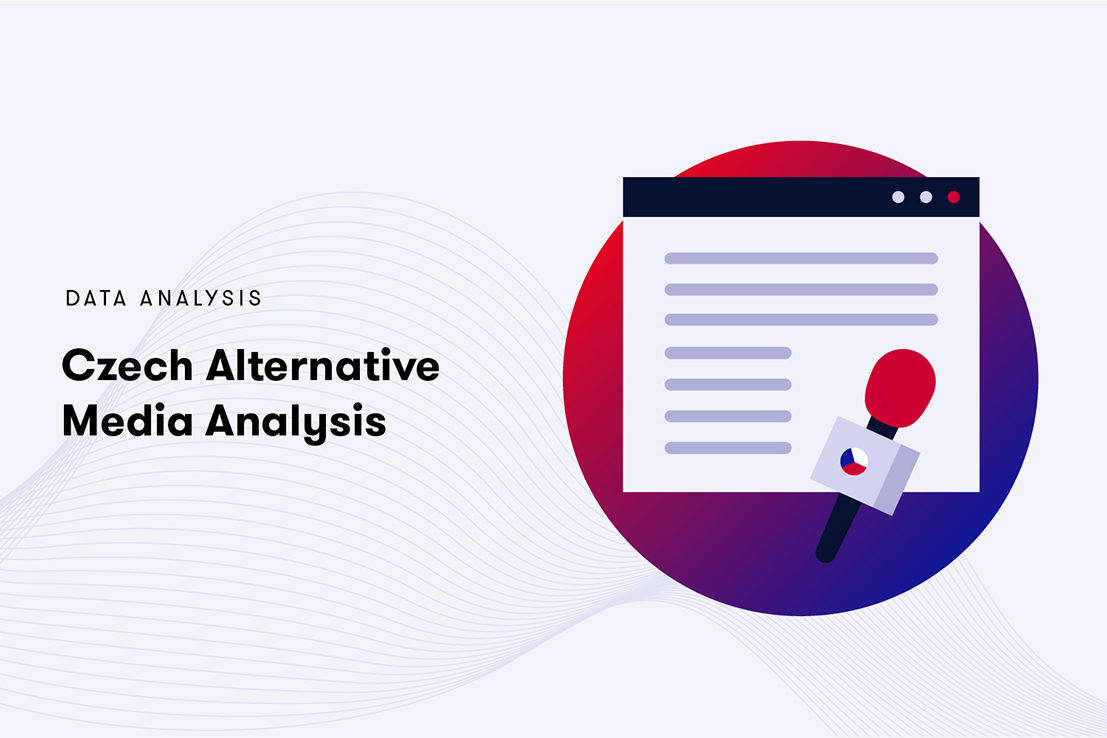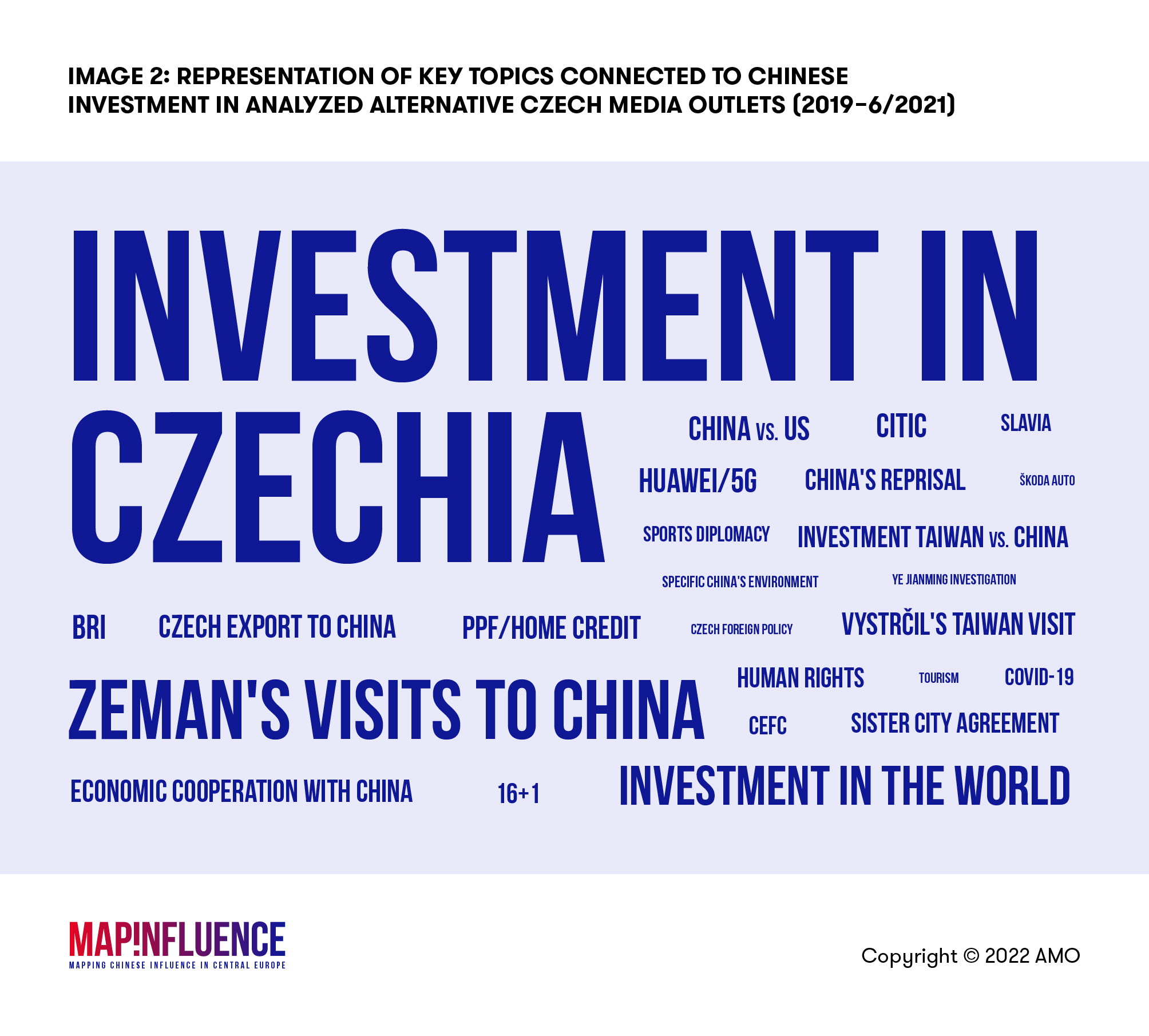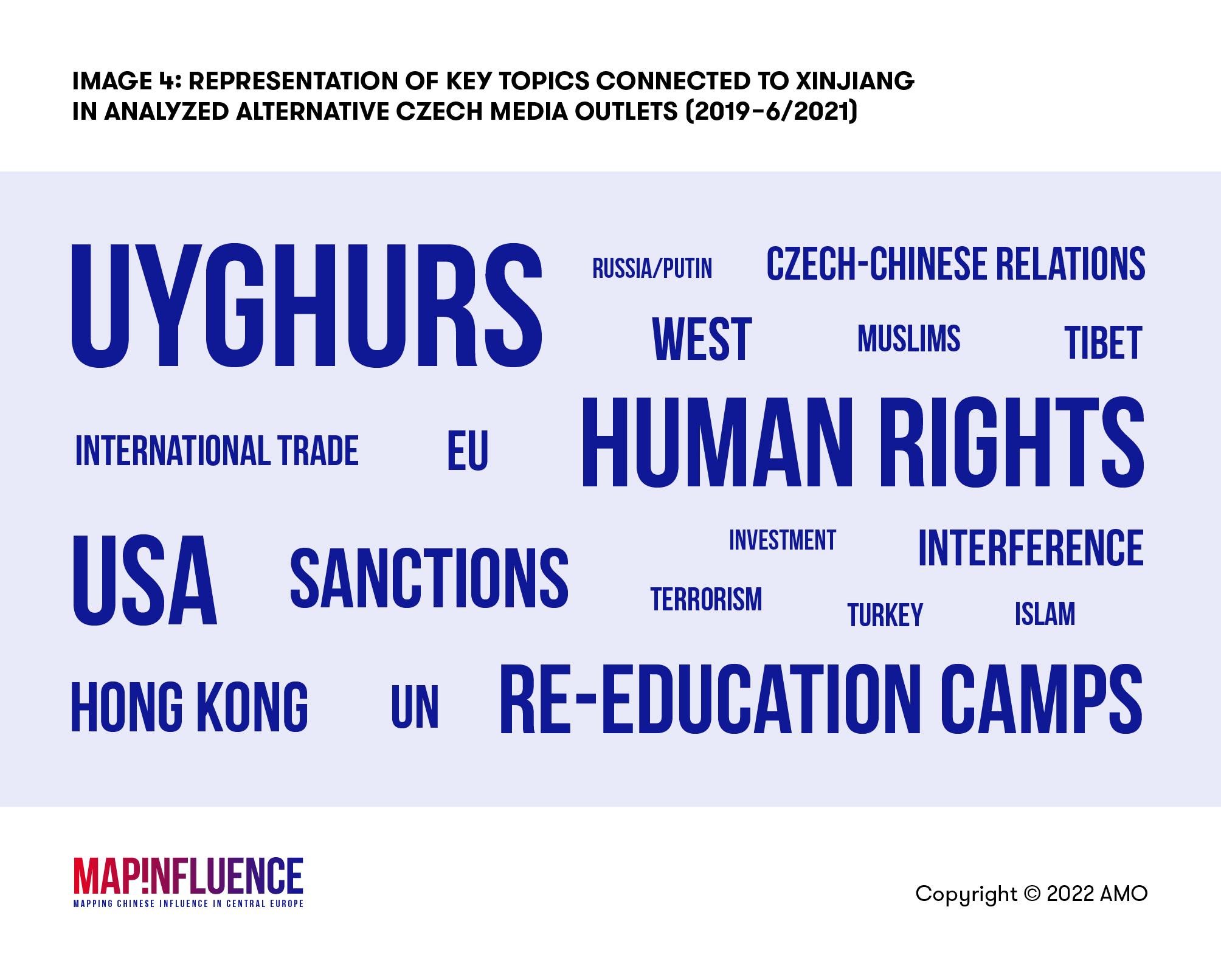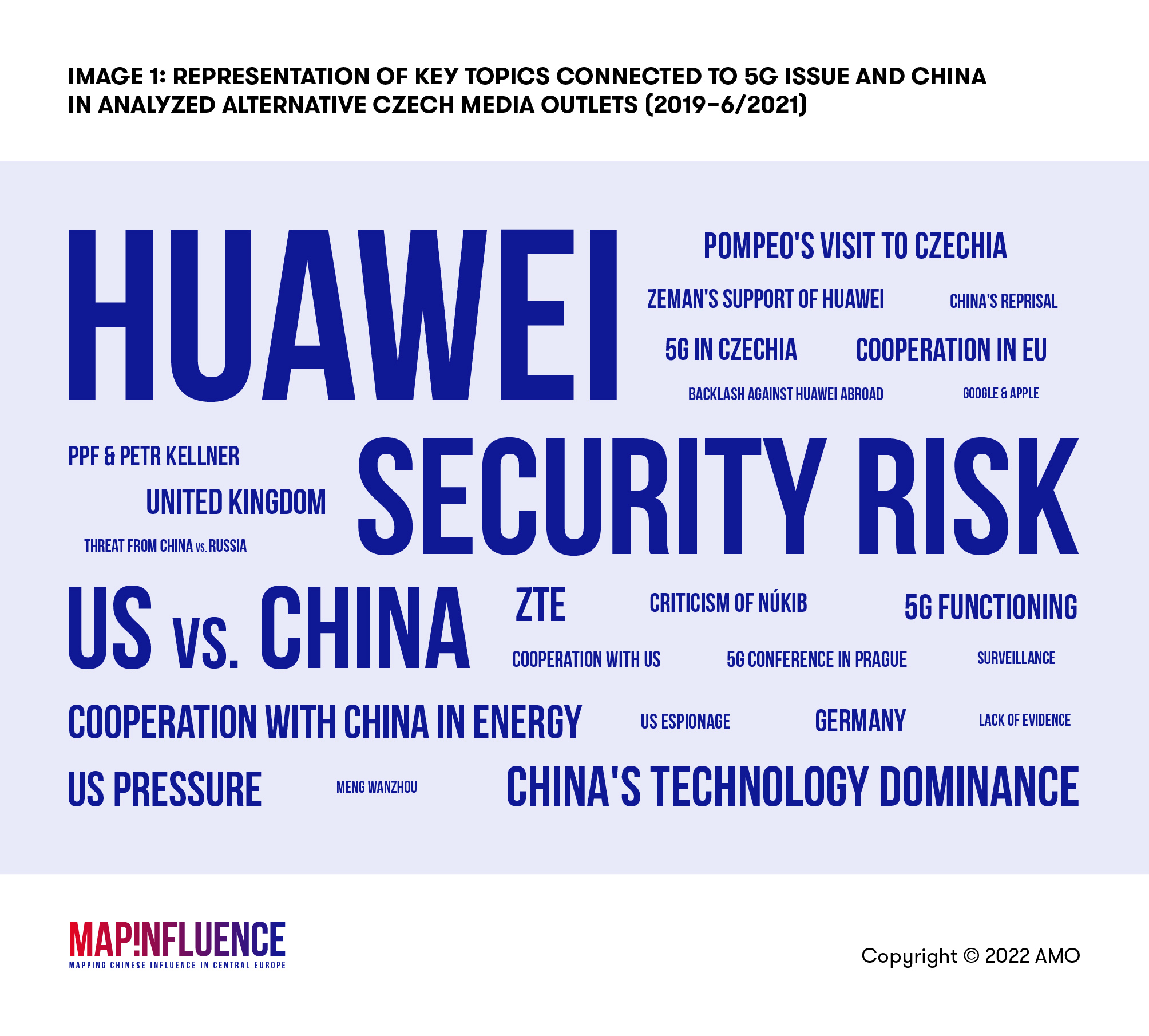Analysis of China-Related Issues in Czech Alternative Media

The latest MapInfluenCE research project combines a detailed and years-long effort to map Chinese narratives in traditional media with specific knowledge of the Czech alternative media environments. As such, the research contributes to the understanding of the confluence of China and Russia and their narratives in the information space in the region.
MapInfluenCE analysts have examined the depiction of China-related narratives on five specific topics (5G, Chinese investment, Hong Kong protests, Xinjiang, and Taiwan) in three alternative media – Parlamentí listy, Sputnik and Aeronet.
The following infographics are based on a detailed content analysis of the dataset consisting of 1484 articles published by the alternative media outlets in the period from January 2019 to June 2021.
Download the full paper here to get access to all the results of the study and the associated data.
Similar to mainstream media, the 5G issue was to a large extent synonymous with the Chinese company Huawei. ZTE, another Chinese company, was mentioned rather sparsely, usually as a contextual reference.
The key themes related to this issue referred to the security risks and warnings issued in various countries, with particular attention paid to the United Kingdom and Germany, and the Five Eyes (an intelligence alliance of Australia, Canada, New Zealand, United Kingdom, and the US). As in the mainstream media, articles focused on available strategies for 5G buildup and cooperation with partners, especially the US and the EU, including the toolbox for 5G security. Consequently, the 5G issue was a significant point of discussion during Mike Pompeo’s visit to the Czech Republic and Andrej Babiš’ visit to the US.
The framing provided by the alternative media requires closer attention. Huawei was perceived as a security risk considerably less often – in 50 percent of all analyzed articles compared to 72 percent in the case of the mainstream media outputs published in 2019-2020. Instead, these media often chose to omit the contextual background and offered a reduced perspective of the Huawei issue, portraying it as part of the trade war between China and the US. Such an oversimplification then left the reasoning leading to the adoption of measures against Huawei unexplained, contributing to distorted impressions among readers.
The key focus regarding Chinese investment were the investments in the Czech Republic. Compared to other analyzed issues, the debate surrounding Chinese investment was more tailored to the local context, limiting the international context to occasional mentions of the Belt and Road Initiative or situation in other countries.
The investments (or lack thereof) were often mentioned as contextual background to Czech-China relations, including, for example, news on President Zeman’s visits to China, especially the debate on his potential visit to attend the 17+1 summit in spring 2020. Also, other crucial themes were linked to Miloš Zeman, such as sports diplomacy due to famous Czech athletes, Jaromír Jágr and Pavel Nedvěd, accompanying the President to China.
Similar to the findings from the analysis of Czech mainstream media, operations of Chinese company CEFC, whose shares were acquired by the Chinese state company CITIC in 2018 due to CEFC’s bankruptcy, dominated the discourse.

In terms of topic selection, Uyghurs, human rights, concentration camps, as well as Czech-Chinese relations played the most important role, but a number of others, including the “West,” sanctions, EU, US, external interference, or Islam featured prominently, too. Terrorism and geopolitics were also listed among the topics mentioned in relation to the Xinjiang issue, even if less frequently.

A substantial space was given to domestic debate, geopolitical rivalry between the US and China, activities of the United States in the region with a particular focus on Taiwan, and the Czech foreign policy, including vis-à-vis China and Taiwan, often portrayed as an extension of US interests.




